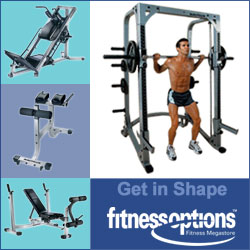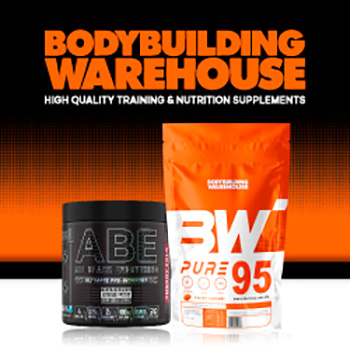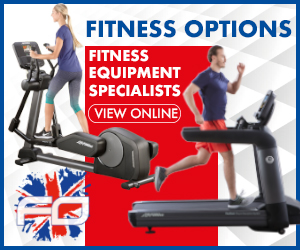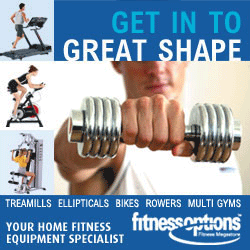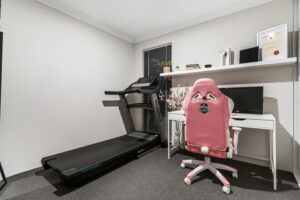
When you’re looking for the perfect best home treadmill, you’re bound to run into a few questions. Here are the answers to some of the most common questions and misunderstandings about bringing commercial quality cardio equipment into your home.
How much room do I need for a treadmill at home?
For safe use, you should budget for a footprint of about 7′ x 3′ for the treadmill itself. Plus, have a minimum of 2 feet of clearance at the back of the treadmill for safety in case you fall. Additionally, allow 1-2 feet on either side for easy access. Ceiling height is also important, add your height plus 15 inches to allow for the elevation of your running stride. Also, add an extra 6 inches for a safety buffer. This means that for most people, ceilings should be at least 8 feet high. Taller people will need more clearance, especially if they plan to use the incline function.
Are folding treadmills as durable as non-folding ones?
Today’s top of the line folding home treadmills have effectively bridged the durability gap with non-folding models. The main difference lies in the price range. Budget folding treadmills under £800 typically compromise on durability, while folding models above £1,500 come with advanced locking mechanisms and reinforced frames that provide stability comparable to non-folding designs. For walking and moderate jogging, most users won’t notice significant differences in higher end folding models. However, elite runners who do intense training may still prefer the absolute rigidity of non-folding commercial grade machines.
Is a subscription necessary for the latest treadmills?
Though interactive training subscriptions can significantly improve your experience with these best home treadmills, they are not usually necessary for basic usage. Many high end treadmills come with several built in programs that work without a subscription. Brands such as Sole and Horizon have specifically designed their machines to provide full functionality without needing to pay ongoing subscription fees. NordicTrack and Peloton treadmills do offer less functionality without a subscription but are still fully functional for manual workouts. When you’re comparing different models, consider the features available without a subscription. Place these against those that require one, so you can find the right fit for your long term needs.
How long does a good home treadmill usually last?
A good home treadmill usually lasts 7-10 years if it’s properly maintained and used normally. The most important factor in how long it lasts is the durability of the motor. Motors with continuous duty horsepower (CHP) ratings of 3.0 or higher are usually designed for long term use. The weight capacity of the treadmill can also give you an idea of how durable it is. Treadmills that are rated for heavier users usually have stronger components throughout.
The lifespan of a treadmill can be greatly impacted by how often it’s used. If a treadmill is used by multiple people in a household every day, it’s going to wear out faster than a treadmill only used a few times a week by one person. By following the manufacturer’s maintenance schedule, you can extend the life of your treadmill by 30-50% compared to treadmills that aren’t properly cared for. This makes preventative care the most cost effective way to own a treadmill.
Are the best home treadmills louder than gym ones?
Current home treadmills have made great strides in reducing noise, with high end models operating at 60-70 decibels. This is about the same as regular conversation or the sound of a dishwasher. This is a big step up from older models and many commercial ones, which put durability before noise reduction. Noise can be affected by the quality of the motor, the deck cushioning system, the thickness of the belt, and the overall stiffness of the construction.
If you live in an apartment with shared walls or have kids at home, treadmills with larger motors are a great choice. These treadmills run at lower RPMs to reach the speeds you want, so they’re much quieter. Using a rubber mat under your treadmill and keeping up with regular maintenance can also help to keep the noise down. This works by reducing the amount of vibration that gets transferred to the structure of your building.
Welcome to Fitness Options, the fitness equipment specialist. Our new web site is packed with the latest fitness equipment from over 30 different manufacturers. If you’re setting up a home or commercial gym, achieving a specific goal such as cardio fitness, strength, bodybuilding or weight loss then we can help. We can deliver direct to your door anywhere in the UK and many of our products enjoy FREE DELIVERY! We also provide a tailored installation service. Click Here to find out more.

